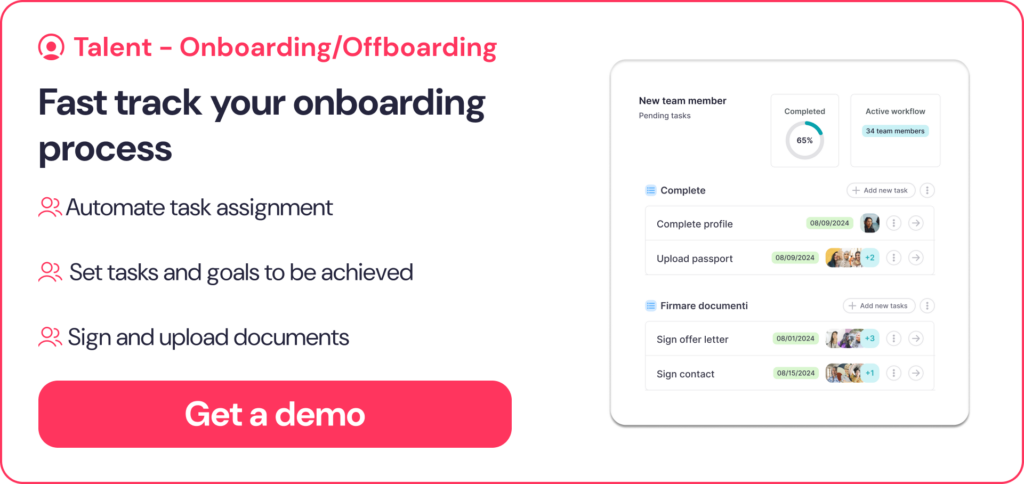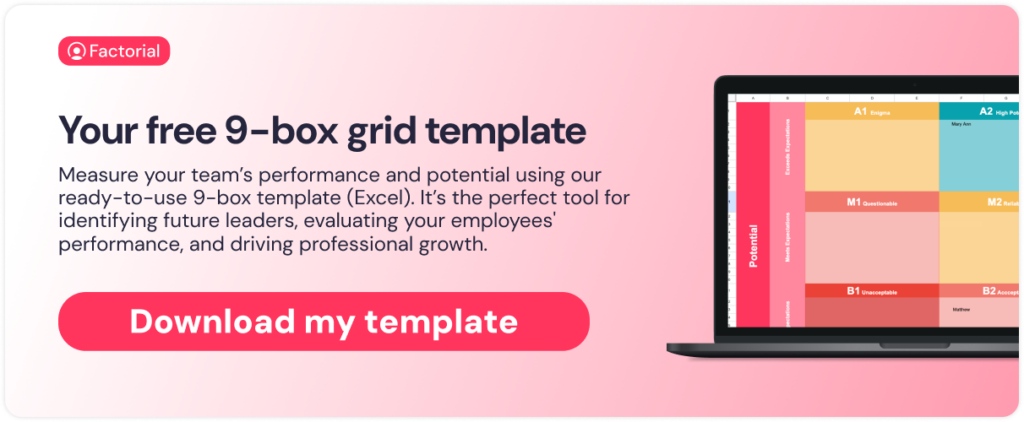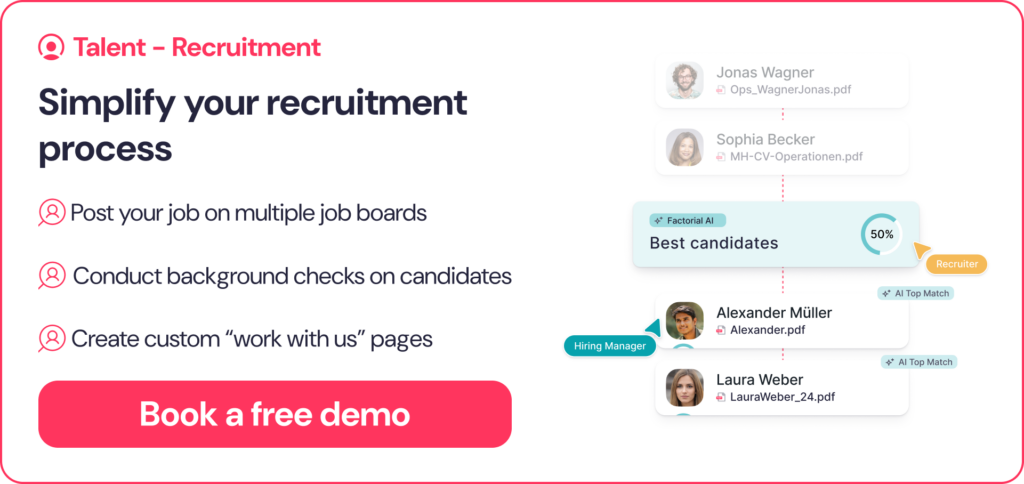Strategic workforce planning ensures managers and HR teams alike are keeping up with their business’ long-term objectives and emerging technology. This aligns their company goals with innovative and modern digital solutions. On this page, we discuss workforce planning tools: why they are valuable to leaders and provide a list of the top eight workforce planning solutions.
Highlights:
- Workforce planning tools help you make better decisions resulting in higher productivity levels and lower costs.
- Invest in workforce planning tools to see future growth and lower the risk of uncertainty in the long run.
- Factorial is the only workforce planning tool your business needs.
What are Workforce Planning Tools?
If you’ve not heard of workforce planning tools, they might sound a bit complicated at first hearing. However, these tools are designed to analyse the current capability of the workforce and assess whether it meets current and future needs. Essentially, this is a solution for help create an understanding between current and future workforce needs. This is a valuable resource for leaders to obtain data and assist your company reach its goals when it comes to workforce planning.
Benefits of Workforce Planning Tools
Workforce planning tools automate tasks and provide data-driven insights, providing several benefits to an organisation:
Deliver Cost Savings
Workforce planning tools help you know your workforce’s current capabilities and what you need, ensuring you hire the correct number of people in the right roles. Reducing either over or understaffing makes the business more efficient and helps control the labour costs for the organisation by optimising the amount spent on salaries and benefits.
Support Talent Management & Retention
These tools can support talent management and recruitment by identifying skills gaps against current and future needs, predicting issues with succession planning and highlighting leadership development opportunities. Crucially, these tools can support employees with leadership and development programmes and ensure fair compensation, improving employee morale and impacting retention rates.
Increased Productivity
Using workforce planning tools reduces the manual work involved in some HR tasks, freeing time to focus on strategic interventions. These tools can also assist in schedule making, monitoring performance, and tracking hours worked. All of which contribute to greater productivity in the whole workforce and eliminate time-consuming repetitive, manual work.
Contribute to Meeting DE&I Goals
Workforce planning tools provide a framework and metrics to track diversity, equity and inclusion measures, helping foster a more inclusive workplace culture. The tools can highlight recruitment bias and ensure pay equity between people performing similar roles.
Mitigate Risks
By looking ahead to the future needs of the workforce, these tools can help businesses understand what they need to do to prepare for unexpected workforce issues. These could include significant disruptions such as changes in technology, economic shifts or developments in the workforce, such as retirement and relocations. Workforce planning tools can also help organisations ensure that they are compliant with local labour laws and regulations.
Top 8 Workforce Planning Tools
Once you search for workforce planning tools, you will discover various options. Here, we list the top eight with a summary of what they do and why you might want to use them.
9-Box Grid
A tool used for talent management, a 9-box grid assesses employees’ past and current performance on the x-axis and their potential for growth and leadership on the y-axis. This workforce planning tool allows you to have an overview of which team members are up next for a leadership role so you can properly plan and prepare to recruit and allocate budget accordingly.
Value: It provides a clear picture of which employees need development and which have high potential. And even better – we’re providing you with a free template.
Strategic Workforce Planning Map
A strategic workforce planning map usually has four stages:
- Assess the current workforce (skills, demographics and performance)
- Forecast future needs (industry trends, business plans)
- Identify the gaps between the current workforce and future needs
- Develop an action plan
Value: Ensures that the workforce is aligned with the business’s overall strategy and helps prepare for industry and market changes.
HR Dashboard
HR dashboard is a visual tool that easily allows leaders to track, assess and present data on the workforce. The metrics usually cover absenteeism, employee engagement, performance and productivity, recruitment and turnover, and a workforce overview.
Value: Provides a quick summary in a visual way for our busy leaders to have data readily available. Which supports real-time decision-making by combining key HR metrics in one format.
Compensation and Benefits Analysis
This workforce planning tool looks at everything that has to do with salaries in a business to ensure that the pay structures and benefits packages are appropriate to attract, retain, and motivate employees while remaining cost-effective for the company.
A compensation and benefits analysis looks at:
- Salary structures
- Incentives and performance bonuses
- Benefits and other forms of compensation
- Pay equity
- Total compensation packages
Value: Ensures an organisation understands if its salary structure is competitive and will enable the retention of top talent for future needs.
Scenario Planning
Scenario planning is a forecasting technique that models different ways (best case, worst case, and baseline) the workforce may be affected in the future, allowing organisations to create contingency plans to implement when needed.
Value: Prepares the business to deal with change and uncertainty and supports a culture of flexibility and agility in the workforce.
Skills Gap Analysis
A skills gap analysis looks at the current skills available in the workforce and compares them to what the organisation needs. With this knowledge, organisations can create and execute learning and development programmes and recruitment strategies to fill the identified skills gap.
Value: Improves employee motivation, ensures training needs are cost-effective as they are focussed on specific needs and provides data for recruitment strategies.
Headcount Planning & Budgeting
Headcount planning and budgeting is a workforce planning tool that takes a structured approach to ensure an organisation has accurate knowledge of the current workforce and a clear idea about what it needs to have in the future. This tool also involves developing strategies to support the creation of a workforce that meets the business requirements and monitoring their implementation.
Value: Provides the business with a focused approach to ensuring it has the right people in the right roles both now and in the future and helps with resource allocation.
Diversity & Inclusion Metrics
Tracking diversity and inclusion metrics is an essential workforce planning tool to support DEI initiatives that aim to create a welcoming workforce that attracts and retains the best talent.
Metrics to track include:
- Hiring – the percentage of hires from diverse backgrounds at all levels
- Pay – pay gap analysis by gender, race and demographic
- Leadership – promotion rates by demographic
- Satisfaction – how employees from underrepresented groups feel within the organisation
- Retention – the percentage of people from diverse backgrounds staying in the organisation
Value: Ensures the organisation has oversight of how DEI initiatives are working and can adapt plans to ensure that the workforce is representative of diverse groups.
Choosing the Right Workforce Planning Tools
Workforce planning needs to be a continuous process in the business that uses different tools to provide different perspectives to build a holistic picture of the current workforce and future needs.
If you are thinking about which tools to use, consider these tips first:
- Spend some time thinking about your priorities regarding workforce planning – for example, is there an apparent skills gap, or are you in an industry undergoing a technological change?
- Consider the features you need in your workforce planning tools – for example, do you want to be able to customise the dashboard or integrate it with other systems?
- Pricing – are the tools offering value for money?
- Customer support & training – are the tools intuitive to use, or will you require support, and if so, how readily available is it?
- Flexibility – are the tools scalable if you grow your workforce?
- Compliance & legal issues – are you comfortable with the tools being compliant with data privacy laws and having appropriate controls to protect individual employees?
Factorial: Your All-In-One Tool
Factorial is a comprehensive business management tool that can provide detailed and data-driven insights into your workforce. If you are looking for workforce planning tools, Factorial is the only platform you’ll need to invest in. Factorial’s software includes:
- A centralised platform for all employee data, including attendance, payroll and performance.
- The ability to create reports and KPIs to provide an overview of the workforce at any time.
- Performance management tools to identify development needs, create talent inventory, and streamline succession planning.
- Scheduling tools & time tracking to allocate resources appropriately in terms of both current and future needs.
Watch what Factorial can do for you in less than two minutes!
If you’re ready to gain real-time insights and set your business up for success. Get your free trial of Factorial and see if for yourself. Book your demo today!




